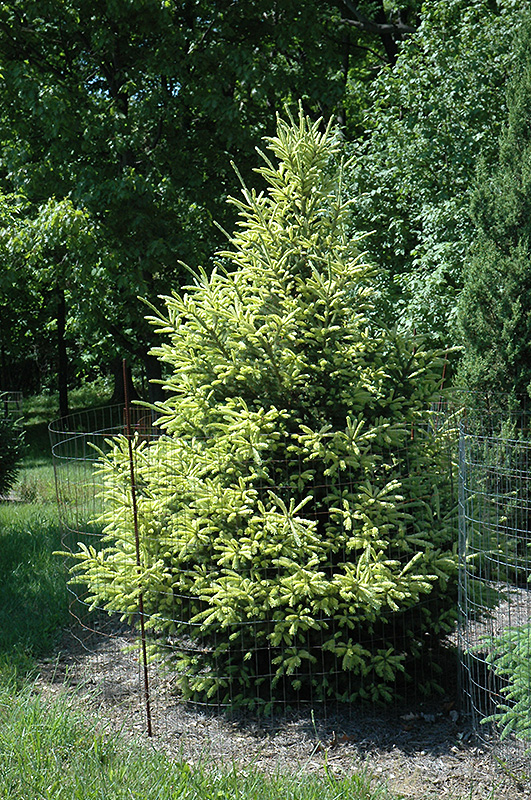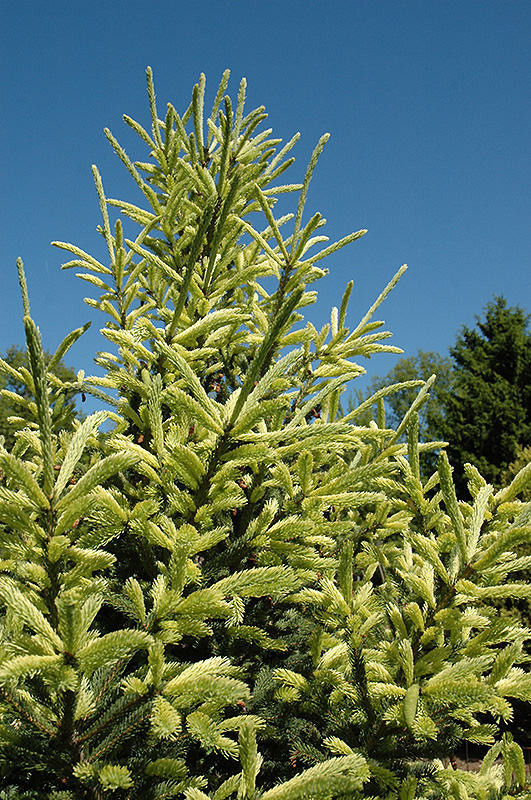>> Home
McConnell's Gold Spruce
Picea glauca 'McConnell's Gold'
Height: 20 feet
Spread: 10 feet
Sunlight:
![]()
![]()
Hardiness Zone: 3a
Description:
A very beautiful, unusual conifer displaying butter yellow new growth that slowly turns green when it matures; ideal as a garden accent; handsome upswept branches, conical habit and the unusual color make this one an excellent choice as an accent tree
Ornamental Features
McConnell's Gold Spruce is primarily valued in the landscape for its distinctively pyramidal habit of growth. It has attractive green evergreen foliage which emerges buttery yellow in spring. The needles are highly ornamental and remain green throughout the winter.
Landscape Attributes
McConnell's Gold Spruce is a dense evergreen tree with a strong central leader and a distinctive and refined pyramidal form. It lends an extremely fine and delicate texture to the landscape composition which can make it a great accent feature on this basis alone.
This is a relatively low maintenance tree. When pruning is necessary, it is recommended to only trim back the new growth of the current season, other than to remove any dieback. It has no significant negative characteristics.
McConnell's Gold Spruce is recommended for the following landscape applications;
- Accent
- Vertical Accent
Planting & Growing
McConnell's Gold Spruce will grow to be about 20 feet tall at maturity, with a spread of 10 feet. It has a low canopy, and is suitable for planting under power lines. It grows at a slow rate, and under ideal conditions can be expected to live for 50 years or more.
This tree does best in full sun to partial shade. It prefers to grow in average to moist conditions, and shouldn't be allowed to dry out. It is not particular as to soil type or pH. It is quite intolerant of urban pollution, therefore inner city or urban streetside plantings are best avoided, and will benefit from being planted in a relatively sheltered location. This is a selection of a native North American species.

